Pozzuoli Rione Terra: the history of the first port of Rome
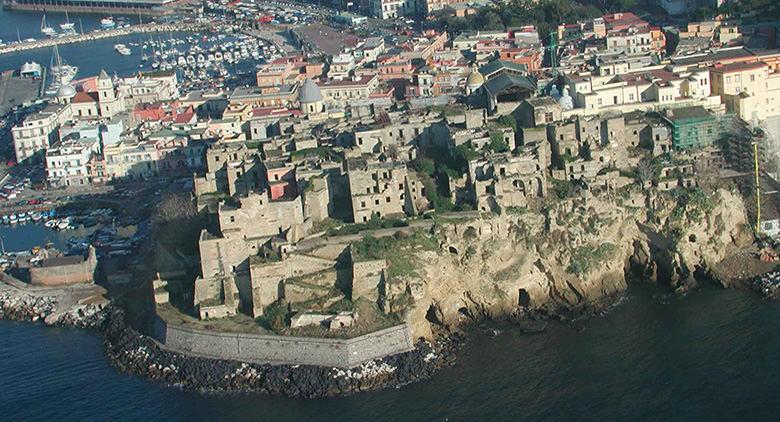
Rione Terra is the first city of Pozzuoli dating back to the 2nd century BC and it is an excellent example of urban stratification over the centuries. The Rione Terra is located on a hill to better control arrivals from the sea. Pozzuoli was considered the port of Rome, before the construction of Ostia.
You must see the cathedral: it is built on the remains of the temple of Augustus and it reopened to the public in recent years, after numerous restoration.
The area of the Rione Terra of Pozzuoli was completely evicted in 1970, following a bradyseism crisis, for this reason it took on the features of a ghost area for many years.
Temple of Serapide in Pozzuoli
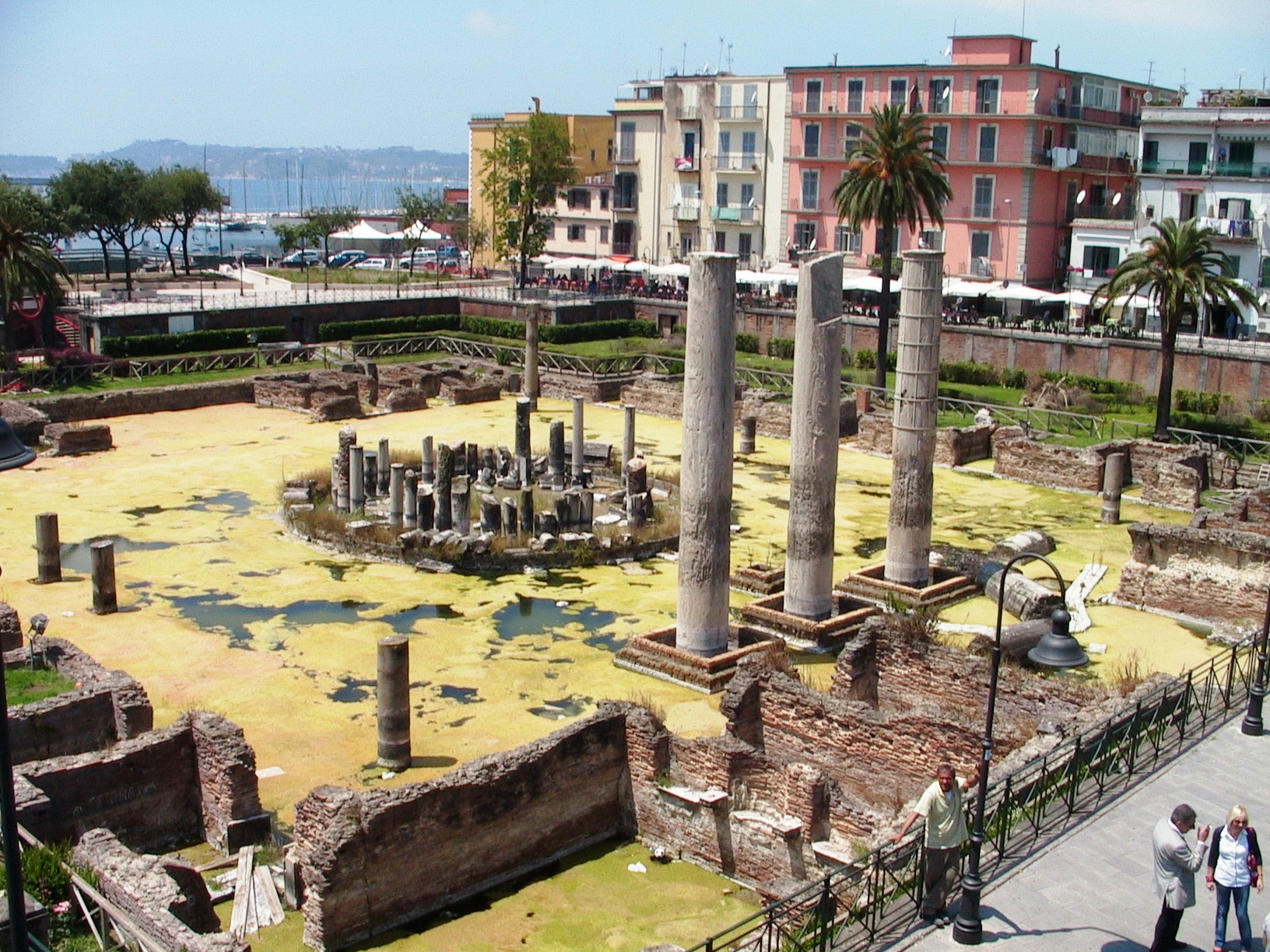
The Temple of Serapide is not a temple but it's a macellum (market) of the I-II century AD. The macellum is well preserved, thanks to bradyseism (volcanic activity that increases and then decreases the level of the city compared to the sea) of the city of Pozzuoli.
The macellum was initially confused with a temple, because during the first excavations a statue of the Egyptian god Serapide was found in the area.
Flavio Amphitheater of the city of Pozzuoli
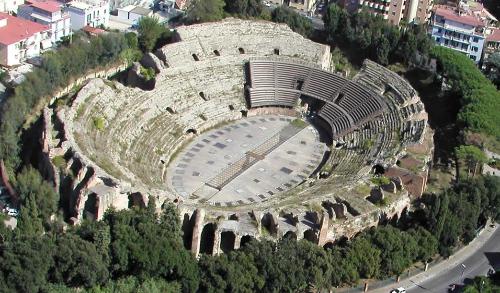
Flavio amphitheater of Pozzuoli was built by the same architects of the Colosseum. The amphitheater was built under Vespasian and perhaps it was inaugurated under Tito.
Here, the people of Pozzuoli was present to theatrical performances, the fights between gladiators and cultural events. In the basement the gears of cages and some scenographic elements of the shows are still visible.
Seafront of Pozzuoli: an area for go to the beach and nightlife
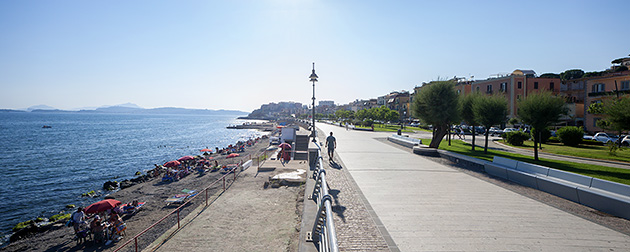
The seafront of Pozzuoli has been dedicated to Sandro Pertini (an important Italian President) in recent years. The seafront is the perfect place for a walk with a breathtaking view. It is also the hub of nightlife, infact here there are many pubs and coffee bar with a good view of the sea.
Also, here you can get a nice tan and a swim at the sea, because there are rocks.
Avellino Park of Pozzuoli: a historical green area

Avellino Park of Pozzuoli is a green area in the upper part of the city. Initially, the park was the private garden of the 16th century Villa Avellino.
In addition to an enchanting landscape, the park offers a view of some remains of antiquity. Here, infact we can find Roman ruins, a large ancient cistern and the famous marble "mask" dating back to the Flavian age.
The park is the perfect place for a relaxing break after a long walk, without losing contact with ancient world.
Sanctuary of Saint Gennaro in Pozzuoli: the story of the miracle of the saint
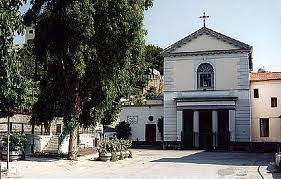
The Sanctuary is in the place where San Gennaro was beheaded. Infact, here - as in the Cathedral of Naples - the Saint's blood liquefies on the stone of the decapitation.
Only the altar remained of the ancient basilica due to the earthquakes and the various volcanic eruptions of the Campi Flegrei over the centuries. The basilica was completely rebuilt in the eighteenth century.
Pozzuoli port: the story between Caligula and Saint Paul

The harbour of the city of Pozzuoli is perfect for a walk.
To see absolutely the Caligoliano pier: as you can guess from the name, it was built by the emperor Caligula to connect Pozzuoli to the island of Ischia. Impossible challenge, but Caligula remains in history as the craziest among the emperors of Rome.
Moreover, not everyone knows that Pozzuoli is the first city that saw the landing of Saint Paul in Italy. At the harbour, you can still admire a plaque that recalls that moment so important in the history of Christianity. The diocese of Pozzuoli is the oldest in Italy because it was founded by the same Saint Paolo.
Solfatara Pozzuoli: an active volcano to visit

The Volcano Solfatara of Pozzuoli is one of the active volcanoes in the Campi Flegrei area and it is also one of the most dangerous in the world. The volcano has numerous fumaroles in which it is possible to see the activity of the sulphurous anhydride.
Over the centuries, the Solfatara was considered a hot spring: here, people came to treat respiratory and skin diseases. Now, it is a study center of geology and a tourist place.
To visit absolutely the whole area, which offers a very unusual landscape.
Averno lake of Pozzuoli: the legend of entry into Hades

The Lake Averno of the city of Pozzuoli is a lake of volcanic origin, its name derives from the Greek "without birds", because the sulphurous gas killed birds in flight. In ancient times, the lake was famous because it considered the entrance of Hades, the kingdom of the dead. Infact, the landscape around the lake was very dark and gloomy. Its waters were black, as if they were infernal.
Nowadays, Lake Averno is an evocative place to go for a walk or a bit of jogging.
Pozzuoli what to see: the oasis of Montenuovo

Montenuovo is the youngest volcano in the Campi Flegrei, it is born only during the volcanic eruption of 1538.
Historical sources of the time tell how the mountain was born in 48 hours, engulfing an entire medieval village.
Now, the volcano is inactive and it offers an incredible landscape. On its slopes, there is a rich Mediterranean vegetation: the Oasis is famous for its hiking trails. So, comfortable shoes and recommended trekking stuff.
How to reach Pozzuoli by public transport
It is possible to reach Pozzuoli by public transport. Starting from Piazza Garibaldi you have to take Line 2 from Naples Central Station and get off at the Pozzuoli stop, da qui troverete diversi autobus per raggiungere i vari punti d'interesse.
The journey time is approximately of 42 minutes.










Lascia un commento